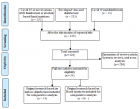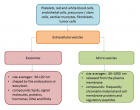Abstract
Research Article
Carbonic Anhydrase I modifies SOD1-induced motor neuron toxicity in Drosophila via ER stress pathway
Jian Liu*, Deyi Lu, Xiao Peng, Xuejiao Jia, Guiyi Li, Na Tan, Zhen Wei, Xinzhu Fei, Xiaochen Liu, Tatsuhiko Kadowaki and Jian Liu
Published: 01 August, 2019 | Volume 3 - Issue 2 | Pages: 135-144
Background: Drosophila models of amyotrophic lateral sclerosis (ALS) have been widely used in understanding molecular mechanisms of ALS pathogenesis as well as discovering potential targets for therapeutic drugs. Mutations in the copper/zinc superoxide dismutase (SOD1) cause ALS by gain of toxic functions and induce toxicity in fly motor neurons.
Results: In this study, we have determined that human carbonic anhydrase I (CA1) can alleviate mutant SOD1-induced motor neuron toxicity in the transgenic fly model of ALS. Interestingly, we found that motor neuron expression of CA1 could independently induce locomotion defect as well as decreasing the survival rate. In addition, CA1-induced toxicity in motor neurons is anhydrase activity-dependent. Mechanistically, we identified that both SOD1- and CA1-induced toxicity involve the activation of eIF2α in the ER stress response pathway. Downstream activation of the JNK pathway has also been implicated in the induced toxicity.
Conclusion: Our results have confirmed that SOD1-induced toxicity in fly motor neuron also involves endoplasmic reticulum (ER) stress pathway. More importantly, we have discovered a new cellular role that CA1 plays by antagonizing mutant SOD1-induced toxicity in motor neurons involving the ER stress pathway. Such information can be potentially useful for further understanding disease mechanisms and developing therapeutic targets for ALS.
Read Full Article HTML DOI: 10.29328/journal.jnnd.1001024 Cite this Article Read Full Article PDF
Keywords:
Carbonic Anhydrase 1 (CA1); SOD1; ALS; Drosophila; Motor neuron; Endoplasmic Reticulum (ER) stress
References
- Kiernan MC, Vucic S, Cheah BC, Turner MR, Eisen A, et al. Amyotrophic lateral sclerosis. Lancet. 2011; 377: 942-955. PubMed: https://www.ncbi.nlm.nih.gov/pubmed/21296405
- Mathis S, Goizet C, Soulages A, Vallat JM, Masson GL. Genetics of amyotrophic lateral sclerosis: A review. J Neurol Sci. 2019; 399: 217-226. PubMed: https://www.ncbi.nlm.nih.gov/pubmed/30870681
- Taylor JP, Brown RH Jr, Cleveland DW. Decoding ALS: from genes to mechanism. Nature. 2016; 539: 197-206. PubMed: https://www.ncbi.nlm.nih.gov/pubmed/27830784
- Liu X, Lu D, Bowser R, Liu J. Expression of Carbonic Anhydrase I in Motor Neurons and Alterations in ALS. Int J Mol Sci. 2016; 17. PubMed: https://www.ncbi.nlm.nih.gov/pubmed/27809276
- Tolvanen ME, Ortutay C, Barker HR, Aspatwar A, Patrikainen M, et al. Analysis of evolution of carbonic anhydrases IV and XV reveals a rich history of gene duplications and a new group of isozymes. Bioorg Med Chem. 2013; 21: 1503-1510. PubMed: https://www.ncbi.nlm.nih.gov/pubmed/23022279
- Frost SC. Physiological functions of the alpha class of carbonic anhydrases. Subcell Biochem. 2014; 75: 9-30. PubMed: https://www.ncbi.nlm.nih.gov/pubmed/24146372
- Syrjanen L, Tolvanen ME, Hilvo M, Vullo D, Carta F, et al. Characterization, bioinformatic analysis and dithiocarbamate inhibition studies of two new alpha-carbonic anhydrases, CAH1 and CAH2, from the fruit fly Drosophila melanogaster. Bioorg Med Chem. 2013; 21: 1516-1521. PubMed: https://www.ncbi.nlm.nih.gov/pubmed/22989910
- Overend G, Luo Y, Henderson L, Douglas AE, Davies SA, et al. Molecular mechanism and functional significance of acid generation in the Drosophila midgut. Sci Rep. 2016; 6: 27242. PubMed: https://www.ncbi.nlm.nih.gov/pubmed/27250760
- Chang X, Han J, Zhao Y, Yan X, Sun S, et al. Increased expression of carbonic anhydrase I in the synovium of patients with ankylosing spondylitis. BMC Musculoskelet Disord. 2010; 11: 279. PubMed: https://www.ncbi.nlm.nih.gov/pubmed/21143847
- Connor DE Jr, Chaitanya GV, Chittiboina P, McCarthy P, Scott LK, et al. Variations in the cerebrospinal fluid proteome following traumatic brain injury and subarachnoid hemorrhage. Pathophysiology. 2017; 24: 169-183. PubMed: https://www.ncbi.nlm.nih.gov/pubmed/28549769
- Gao BB, Clermont A, Rook S, Fonda SJ, Srinivasan VJ, et al. Extracellular carbonic anhydrase mediates hemorrhagic retinal and cerebral vascular permeability through prekallikrein activation. Nat Med. 2007; 13: 181-188. PubMed: https://www.ncbi.nlm.nih.gov/pubmed/17259996
- Johnston-Wilson NL, Sims CD, Hofmann JP, Anderson L, Shore AD, et al. Disease-specific alterations in frontal cortex brain proteins in schizophrenia, bipolar disorder, and major depressive disorder. The Stanley Neuropathology Consortium. Mol Psychiatry. 2000; 5: 142-149. PubMed: https://www.ncbi.nlm.nih.gov/pubmed/10822341
- Mentese A, Erkut N, Demir S, Yaman SO, Sumer A, et al. Serum carbonic anhydrase I and II autoantibodies in patients with chronic lymphocytic leukaemia. Cent Eur J Immunol. 2018; 43: 276-280. PubMed: https://www.ncbi.nlm.nih.gov/pubmed/30588172
- Mentese A, Fidan E, Alver A, Demir S, Yaman SO, et al. Detection of autoantibodies against carbonic anhydrase I and II in the plasma of patients with gastric cancer. Cent Eur J Immunol. 2017; 42: 73-77. PubMed: https://www.ncbi.nlm.nih.gov/pubmed/28680333
- Ruiz Esparza-Garrido R, Velazquez-Flores MA, Diegoperez-Ramirez J, López-Aguilar E, Siordia-Reyes G, et al. A proteomic approach of pediatric astrocytomas: MiRNAs and network insight. J Proteomics. 2013; 94: 162-175. PubMed: https://www.ncbi.nlm.nih.gov/pubmed/24060999
- Torella D, Ellison GM, Torella M, Vicinanza C, Aquila I, et al. Carbonic anhydrase activation is associated with worsened pathological remodeling in human ischemic diabetic cardiomyopathy. J Am Heart Assoc. 2014; 3: e000434. PubMed: https://www.ncbi.nlm.nih.gov/pubmed/24670789
- Visanji NP, Wong JC, Wang SX, Cappel B, Kleinschmidt-Demasters BK, et al. A proteomic analysis of pediatric seizure cases associated with astrocytic inclusions. Epilepsia. 2012; 53: 50-54. PubMed: https://www.ncbi.nlm.nih.gov/pubmed/22220588
- Yamanishi H, Murakami H, Ikeda Y, Abe M, Kumagi T, et al. Regulatory dendritic cells pulsed with carbonic anhydrase I protect mice from colitis induced by CD4+CD25- T cells. J Immunol. 2012; 188: 2164-2172. PubMed: https://www.ncbi.nlm.nih.gov/pubmed/22291189
- Rosen DR, Siddique T, Patterson D, et al. Mutations in Cu/Zn superoxide dismutase gene are associated with familial amyotrophic lateral sclerosis. Nature. 1993; 362: 59-62. PubMed: https://www.ncbi.nlm.nih.gov/pubmed/8332197
- Reaume AG, Elliott JL, Hoffman EK, Kowall NW, Ferrante RJ, et al. Motor neurons in Cu/Zn superoxide dismutase-deficient mice develop normally but exhibit enhanced cell death after axonal injury. Nat Genet. 1996; 13: 43-47. PubMed: https://www.ncbi.nlm.nih.gov/pubmed/8673102
- Saccon RA, Bunton-Stasyshyn RK, Fisher EM, Fratta P. Is SOD1 loss of function involved in amyotrophic lateral Sclerosis? Brain. 2013; 136: 2342-2358. PubMed: https://www.ncbi.nlm.nih.gov/pubmed/23687121
- Fujisawa T, Homma K, Yamaguchi N, Kadowaki H, Tsuburaya N, et al. A novel monoclonal antibody reveals a conformational alteration shared by amyotrophic lateral sclerosis-linked SOD1 mutants. Ann Neurol. 2012; 72: 739-749. PubMed: https://www.ncbi.nlm.nih.gov/pubmed/23280792
- Nishitoh H, Kadowaki H, Nagai A, Maruyama T, Yokota T, et al. ALS-linked mutant SOD1 induces ER stress- and ASK1-dependent motor neuron death by targeting Derlin-1. Genes Dev. 2008; 22: 1451-1464. PubMed: https://www.ncbi.nlm.nih.gov/pubmed/18519638
- Watson MR, Lagow RD, Xu K, Zhang B, Bonini NM. A drosophila model for amyotrophic lateral sclerosis reveals motor neuron damage by human SOD1. J Biol Chem. 2008; 283: 24972-24981. PubMed: https://www.ncbi.nlm.nih.gov/pubmed/18596033
- Sahin A, Held A, Bredvik K, Major P, Achilli TM, et al. Human SOD1 ALS Mutations in a Drosophila Knock-In Model Cause Severe Phenotypes and Reveal Dosage-Sensitive Gain- and Loss-of-Function Components. Genetics. 2017; 205: 707-723. PubMed: https://www.ncbi.nlm.nih.gov/pubmed/27974499
- Mohanty AK, Trehan AK. Puerperal uterine inversion: analysis of three cases managed by repositioning, and literature review. J Obstet Gynaecol. 1998; 18: 353-354. PubMed: https://www.ncbi.nlm.nih.gov/pubmed/15512108
- Romero E, Cha GH, Verstreken P, Ly CV, Hughes RE, et al. Suppression of neurodegeneration and increased neurotransmission caused by expanded full-length huntingtin accumulating in the cytoplasm. Neuron; 2008; 57: 27-40. PubMed: https://www.ncbi.nlm.nih.gov/pubmed/18184562
- Sanyal S. Genomic mapping and expression patterns of C380, OK6 and D42 enhancer trap lines in the larval nervous system of Drosophila. Gene Expr Patterns. 2009; 9: 371-380. PubMed: https://www.ncbi.nlm.nih.gov/pubmed/19602393
- Li J, Parker B, Martyn C, Natarajan C, Guo J. The PMP22 gene and its related diseases. Mol Neurobiol. 2013; 47: 673-698. PubMed: https://www.ncbi.nlm.nih.gov/pubmed/23224996
- Pun S, Santos AF, Saxena S, Xu L, Caroni P. Selective vulnerability and pruning of phasic motoneuron axons in motoneuron disease alleviated by CNTF. Nat Neurosci. 2006; 9: 408-419. PubMed: https://www.ncbi.nlm.nih.gov/pubmed/16474388
- Ratnaparkhi A, Lawless GM, Schweizer FE, Golshani P, Jackson GR. A Drosophila model of ALS: human ALS-associated mutation in VAP33A suggests a dominant negative mechanism. PLoS One. 2008; 3: e2334. PubMed: https://www.ncbi.nlm.nih.gov/pubmed/18523548
- Steyaert J, Scheveneels W, Vanneste J, Van Damme P, Robberecht W, et al. FUS-induced neurotoxicity in Drosophila is prevented by downregulating nucleocytoplasmic transport proteins. Hum Mol Genet. 2018; 27: 4103-4116. PubMed: https://www.ncbi.nlm.nih.gov/pubmed/30379317
- Kieran D, Hafezparast M, Bohnert S, Dick JR, Martin J, et al. A mutation in dynein rescues axonal transport defects and extends the life span of ALS mice. J Cell Biol. 2005; 169: 561-567. PubMed: https://www.ncbi.nlm.nih.gov/pubmed/15911875
- Wang W, Wen D, Duan W, Yin J, Cui C, et al. Systemic administration of scAAV9-IGF1 extends survival in SOD1(G93A) ALS mice via inhibiting p38 MAPK and the JNK-mediated apoptosis pathway. Brain Res Bull. 2018; 139: 203-210. PubMed: https://www.ncbi.nlm.nih.gov/pubmed/29499331
- Pinal N, Calleja M, Morata G. Pro-apoptotic and pro-proliferation functions of the JNK pathway of Drosophila: roles in cell competition, tumorigenesis and regeneration. Open Biol. 2019; 9: 180256. PubMed: https://www.ncbi.nlm.nih.gov/pubmed/30836847
- Li Y, Ray P, Rao EJ, Shi C, Guo W, et al. A Drosophila model for TDP-43 proteinopathy. Proc Natl Acad Sci USA. 2010; 107: 3169-3174. PubMed: https://www.ncbi.nlm.nih.gov/pubmed/20133767
- Liang Z, Xue Y, Behravan G, Jonsson BH, Lindskog S. Importance of the conserved active-site residues Tyr7, Glu106 and Thr199 for the catalytic function of human carbonic anhydrase II. Eur J Biochem. 1993; 211: 821-827. PubMed: https://www.ncbi.nlm.nih.gov/pubmed/8436138
- Liu D, Zhang M, Yin H. Signaling pathways involved in endoplasmic reticulum stress-induced neuronal apoptosis. Int J Neurosci. 2013; 123: 155-162. PubMed: https://www.ncbi.nlm.nih.gov/pubmed/23134425
- Walter F, Schmid J, Dussmann H, Concannon CG, Prehn JH et al. Imaging of single cell responses to ER stress indicates that the relative dynamics of IRE1/XBP1 and PERK/ATF4 signalling rather than a switch between signalling branches determine cell survival. Cell Death Differ. 2015; 22: 1502-1516. PubMed: https://www.ncbi.nlm.nih.gov/pubmed/25633195
- Wu CH, Giampetruzzi A, Tran H, Fallini C, Gao FB et al. A Drosophila model of ALS reveals a partial loss of function of causative human PFN1 mutants. Hum Mol Genet. 2017; 26: 2146-2155. PubMed: https://www.ncbi.nlm.nih.gov/pubmed/28379367
Figures:
Similar Articles
-
Lateralized Cerebral Amyloid Angiopathy presenting with recurrent Lacunar Ischemic StrokeYi Li*, Ayman Al-Salaimeh,Elizabeth DeGrush,Majaz Moonis*. Lateralized Cerebral Amyloid Angiopathy presenting with recurrent Lacunar Ischemic Stroke. . 2017 doi: 10.29328/journal.jnnd.1001005; 1: 029-032
-
Comorbidity of alcohol dependence with attention-deficit/hyperactivity disorder and the role of executive dysfunctionsCaterina Pistarini*,Gloria Tosi,Giovanni Vittadini,Ines Giorgi,Elena Fiabane,Paola Palladino. Comorbidity of alcohol dependence with attention-deficit/hyperactivity disorder and the role of executive dysfunctions . . 2018 doi: 10.29328/journal.jnnd.1001008; 2: 001-010
-
Spinal muscular atrophy counteracted by Agrin biological NT-1654Jes Paul*. Spinal muscular atrophy counteracted by Agrin biological NT-1654. . 2018 doi: 10.29328/journal.jnnd.1001009; 2: 011-013
-
Neurobiology of Common Sleep DisordersZhao Liu*,Abdullah Tolaymat,Sreenivas K Avula. Neurobiology of Common Sleep Disorders. . 2018 doi: 10.29328/journal.jnnd.1001013; 2: 039-046
-
Vigour of CRISPR/Cas9 Gene Editing in Alzheimer’s DiseaseJes Paul*. Vigour of CRISPR/Cas9 Gene Editing in Alzheimer’s Disease. . 2018 doi: 10.29328/journal.jnnd.1001014; 2: 047-051
-
Carbonic Anhydrase I modifies SOD1-induced motor neuron toxicity in Drosophila via ER stress pathwayJian Liu*,Deyi Lu,Xiao Peng,Xuejiao Jia,Guiyi Li,Na Tan,Zhen Wei,Xinzhu Fei,Xiaochen Liu,Tatsuhiko Kadowaki,Jian Liu. Carbonic Anhydrase I modifies SOD1-induced motor neuron toxicity in Drosophila via ER stress pathway. . 2019 doi: 10.29328/journal.jnnd.1001024; 3: 135-144
-
Tamsulosin and Dementia in old age: Is there any relationship?Irami Araújo-Filho*,Rebecca Renata Lapenda do Monte,Karina de Andrade Vidal Costa,Amália Cinthia Meneses Rêgo. Tamsulosin and Dementia in old age: Is there any relationship?. . 2019 doi: 10.29328/journal.jnnd.1001025; 3: 145-147
-
Protection from the Pathogenesis of Neurodegenerative Disorders, including Alzheimer’s Disease, Amyotrophic Lateral Sclerosis, Huntington’s Disease, and Parkinson’s Diseases, through the Mitigation of Reactive Oxygen SpeciesSamskruthi Madireddy*,Sahithi Madireddy. Protection from the Pathogenesis of Neurodegenerative Disorders, including Alzheimer’s Disease, Amyotrophic Lateral Sclerosis, Huntington’s Disease, and Parkinson’s Diseases, through the Mitigation of Reactive Oxygen Species. . 2019 doi: 10.29328/journal.jnnd.1001026; 3: 148-161
-
Brain washing systems and other circulating factors in some neurological condition like Parkinson (Pd) and vascular and diabetic dementia: How dynamics- saturation of clearance can act on toxic molecule?Mauro Luisetto*,Farhan Ahmad Khan,Akram Muhamad,Ghulam Rasool Mashori,Behzad Nili Ahmadabadi,Oleg Yurevich Latiyshev. Brain washing systems and other circulating factors in some neurological condition like Parkinson (Pd) and vascular and diabetic dementia: How dynamics- saturation of clearance can act on toxic molecule?. . 2020 doi: 10.29328/journal.jnnd.1001028; 4: 001-013
-
PISA Syndrome-Orthopedic manifestation of a neurological disease?Rajib Dutta*. PISA Syndrome-Orthopedic manifestation of a neurological disease?. . 2020 doi: 10.29328/journal.jnnd.1001032; 4: 038-044
Recently Viewed
-
Success, Survival and Prognostic Factors in Implant Prosthesis: Experimental StudyEpifania Ettore*, Pietrantonio Maria, Christian Nunziata, Ausiello Pietro. Success, Survival and Prognostic Factors in Implant Prosthesis: Experimental Study. J Oral Health Craniofac Sci. 2023: doi: 10.29328/journal.johcs.1001045; 8: 024-028
-
Agriculture High-Quality Development and NutritionZhongsheng Guo*. Agriculture High-Quality Development and Nutrition. Arch Food Nutr Sci. 2024: doi: 10.29328/journal.afns.1001060; 8: 038-040
-
A Low-cost High-throughput Targeted Sequencing for the Accurate Detection of Respiratory Tract PathogenChangyan Ju, Chengbosen Zhou, Zhezhi Deng, Jingwei Gao, Weizhao Jiang, Hanbing Zeng, Haiwei Huang, Yongxiang Duan, David X Deng*. A Low-cost High-throughput Targeted Sequencing for the Accurate Detection of Respiratory Tract Pathogen. Int J Clin Virol. 2024: doi: 10.29328/journal.ijcv.1001056; 8: 001-007
-
A Comparative Study of Metoprolol and Amlodipine on Mortality, Disability and Complication in Acute StrokeJayantee Kalita*,Dhiraj Kumar,Nagendra B Gutti,Sandeep K Gupta,Anadi Mishra,Vivek Singh. A Comparative Study of Metoprolol and Amlodipine on Mortality, Disability and Complication in Acute Stroke. J Neurosci Neurol Disord. 2025: doi: 10.29328/journal.jnnd.1001108; 9: 039-045
-
Development of qualitative GC MS method for simultaneous identification of PM-CCM a modified illicit drugs preparation and its modern-day application in drug-facilitated crimesBhagat Singh*,Satish R Nailkar,Chetansen A Bhadkambekar,Suneel Prajapati,Sukhminder Kaur. Development of qualitative GC MS method for simultaneous identification of PM-CCM a modified illicit drugs preparation and its modern-day application in drug-facilitated crimes. J Forensic Sci Res. 2023: doi: 10.29328/journal.jfsr.1001043; 7: 004-010
Most Viewed
-
Evaluation of Biostimulants Based on Recovered Protein Hydrolysates from Animal By-products as Plant Growth EnhancersH Pérez-Aguilar*, M Lacruz-Asaro, F Arán-Ais. Evaluation of Biostimulants Based on Recovered Protein Hydrolysates from Animal By-products as Plant Growth Enhancers. J Plant Sci Phytopathol. 2023 doi: 10.29328/journal.jpsp.1001104; 7: 042-047
-
Sinonasal Myxoma Extending into the Orbit in a 4-Year Old: A Case PresentationJulian A Purrinos*, Ramzi Younis. Sinonasal Myxoma Extending into the Orbit in a 4-Year Old: A Case Presentation. Arch Case Rep. 2024 doi: 10.29328/journal.acr.1001099; 8: 075-077
-
Feasibility study of magnetic sensing for detecting single-neuron action potentialsDenis Tonini,Kai Wu,Renata Saha,Jian-Ping Wang*. Feasibility study of magnetic sensing for detecting single-neuron action potentials. Ann Biomed Sci Eng. 2022 doi: 10.29328/journal.abse.1001018; 6: 019-029
-
Pediatric Dysgerminoma: Unveiling a Rare Ovarian TumorFaten Limaiem*, Khalil Saffar, Ahmed Halouani. Pediatric Dysgerminoma: Unveiling a Rare Ovarian Tumor. Arch Case Rep. 2024 doi: 10.29328/journal.acr.1001087; 8: 010-013
-
Physical activity can change the physiological and psychological circumstances during COVID-19 pandemic: A narrative reviewKhashayar Maroufi*. Physical activity can change the physiological and psychological circumstances during COVID-19 pandemic: A narrative review. J Sports Med Ther. 2021 doi: 10.29328/journal.jsmt.1001051; 6: 001-007

HSPI: We're glad you're here. Please click "create a new Query" if you are a new visitor to our website and need further information from us.
If you are already a member of our network and need to keep track of any developments regarding a question you have already submitted, click "take me to my Query."
















































































































































